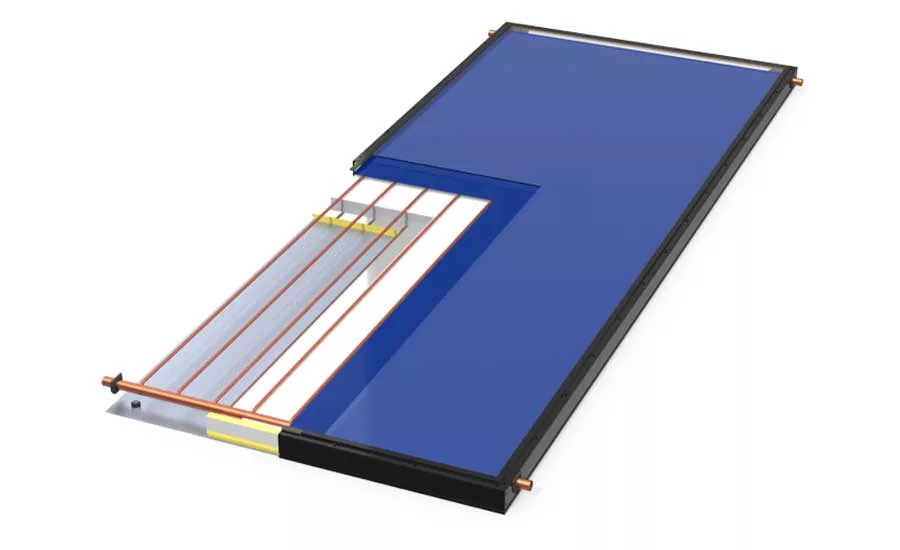
Rendering courtesy of SunEarth.
Solar thermal: Why not utilize what we got?

When most people think about solar, they think about photovoltaic panels that generate electricity, but they don’t often think about solar thermal. When considering heating water, solar thermal is incredibly efficient by comparison.
For example, some of the highest performing photovoltaic panels achieve an efficiency of 20% compared to nearly 75% from the highest performing solar thermal panels. This enormous difference in efficiency is simple. The sun lets out thermal energy and when used directly, as in the case of solar thermal, there are not many losses. There are more losses, as is the case with photovoltaics, freeing up electrons in the process of converting solar radiation into electricity and back to thermal. Since around 75% of the sun’s energy that falls on a solar thermal panel is made useful, it ends up saving space.
This difference translates to around 3.75 times less roof space required by solar thermal when compared to solar photovoltaic. So, if your project requires heating water and you are interested in displacing carbon in our atmosphere, solar thermal is a reasonable choice.
Advantages and disadvantages
Solar, of course, is not without its limitations. As with any technology being utilized, it is in the best interest of the professional to become cognizant of all advantages and disadvantages.
The main advantage is that solar energy is free indefinitely. The main disadvantage is the fact that solar can come to a halt in adverse weather conditions. This is often why, in our industry, we caution builders against utilizing solar as the only means to heat water.
If using solar in a project, it should be done as a prefeed to a fossil fuel or electric boiler. Additionally, the conventional boiler should always be sized as usual, to handle the full building hot water needs. Although solar can offset a sizable portion of a building’s hot water load, it cannot always do the job. So, when the sun doesn’t shine, we must ensure the customers cannot tell the difference.
Emitting less carbon is and should be our goal, but we can never undersize a conventional boiler!
The components
A solar thermal panel is a simple device designed to trap as much heat as possible. It can be distilled into three main components: an insulated box, a heat absorbing fluid channel and a glass lid.
Both the insulated box and heat absorbing fluid channel are unremarkable. Just imagine standing in the sun with a thick coat on. This coat helps increase the temperature by holding in more heat.
The interesting part is the glass. This glass, made specifically for solar, has an incredible property that allows heat in and traps it. To UV radiation and visible parts of the electromagnetic spectrum, the glass appears transparent, but to most parts of infrared radiation, the glass appears opaque.
Once sunlight goes through the glass and reaches the heat absorber, it heats up and emits infrared radiation. The incredible property of solar glass allows heat radiation to enter and makes it difficult to escape, further increasing the usable heat and temperature inside the box.
As it turns out, solar thermal panels are a great analogy to describe what is happening with our planet and why the average global temperature is increasing. The gases our society is emitting into the atmosphere act much like solar glass and allows the sun’s energy into our atmosphere, making it difficult for heat to escape.
The sun, at 93 million miles away, radiates more energy onto earth’s surface in one hour than all humans use in one year. So, let’s trap some of the heat in our water tanks as needed and not in our atmosphere.
So, for your next water heating project, why not consider directly utilizing our sun, the fusion reactor in the sky or “God’s boiler?” RJ 2.0
